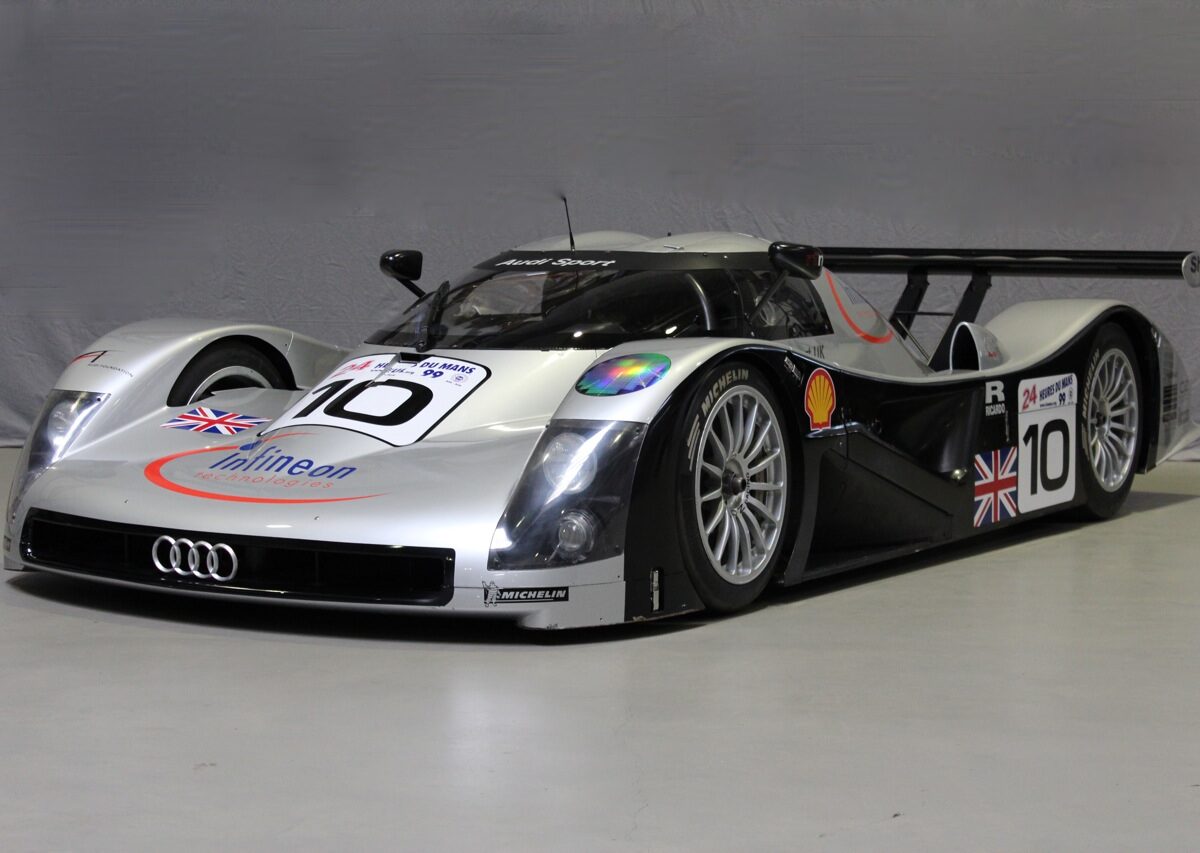Audi R8C (1999)
Details
- Cylinders:
- V8
- Engine CC:
- 3600
Motorsport Icons

When Audi competed in the Le Mans 24 Hours for the first time in 1999, the motorsport world took notice. The organizer ACO had created a set of rules that allowed the use of both sports prototypes with open cockpits and closed LM GTP racing cars. All manufacturers were therefore faced with a difficult choice. Audi decided to take the unusual route of relying on both concepts at the same time. The model shown here bears the name Audi R8C (the C stands for coupé as opposed to the open roadster R8R).
It was designed from the second half of 1998 in Hingham in the UK at the newly acquired Audi subsidiary rtn (racing technology norfolk). Audi has consistently developed the R8C for the high speeds at Le Mans. With a height of just 980 millimeters, the flat sports car is ten centimeters lower than the roadster. Even if the R8C is clearly different from the R8R, it is not entirely different. The engine, transmission, brakes and rear suspension of the Coupé are taken from the roadster. Monocoque, body and front suspension have been newly developed. With its V8 configuration, 3.6-liter displacement and two turbochargers, the engine has the same key data as that of the roadster. However, it is more powerful due to a larger air restrictor and higher boost pressure as a result of the regulations. The body that is 15 centimeters longer also generates more downforce.
Two examples of the coupé entered by Audi Sport UK competed in the Le Mans 24 Hours. The model on display here with starting number 10 completed 198 laps in the hands of the three Brits Perry McCarthy/Andy Wallace/James Weaver before its retirement. After Le Mans, Audi stopped work on the R8C, concentrated from then on on the open body shape and accelerated the development of the Audi R8, which was to win Le Mans five times.
Technical Data
Engine: V8 cylinder light alloy engine, twin turbo
Engine capacity: 3,600 ccm
Output: more than 600 hp (441 kW) according to the regulations
Length/Width/Height: 4,800/2,000/980 mm
Kerb weight: 900 kg
Building period: 1999
Total number of units: 2
